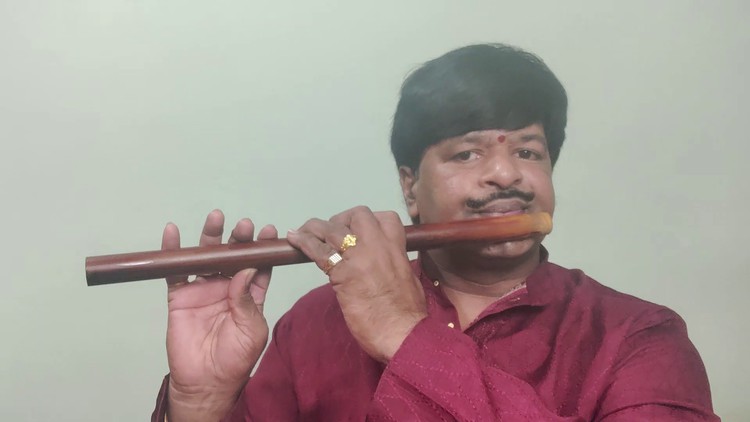
An advanced level course of Krithis composed by Sri.Muthuswamy Deekshitar in Various Raagas (Volume – 2)
What you will learn
Students get to learn by observing the finger movements in the course
Students can go through each line of notations while learning
Students can understand to play the oscillations within the lines
Students will be able to play the compositions on a systematic method of practice
Description
Muthuswami Dikshitar was an exponent of the South Indian Carnatic music genre. He created about 500 compositions in total, most of which are widely sung by renowned musicians in Carnatic music performances even today.
Born in the year 1775 as the eldest son of Ramaswami Dikshitar and Subbamma at Tiruvarur in the Tamil Nadu state, Muthuswami Dikshitar happens to be the youngest of the Carnatic music composer trinity. It is said that Muthuswami Dikshitar was born to his parents after the couple prayed for a child in the Vaitheeswaran Koil temple. Read this biography to learn more about the famous Muthuswami Dikshitar.
A number of the compositions made by Muthuswami Dikshitar are in the Sanskrit language. They have been couched in the Krithi style i.e. a format in which the poetry is set to music. Throughout the course of his life history, Muttuswami Dikshitar toured a number of holy places in the country. And he’s said to have composed Krithis on various deities and temples he visited. The most unique feature about the compositions of Dikshitar is that each one is brilliantly created.
Each and every of the 500 compositions he’s made is not only melodious but also full of depth. Though his Sanskrit compositions are themed on the temple gods and goddesses, yet all of them talk about the concept of advaitin i.e. the one with a form. These songs penned by Muthuswami Dikshitar talk much about the history of the temples and the customs and traditions observed within its precincts. Thus, they also serve as valuable source of historical information.
Content